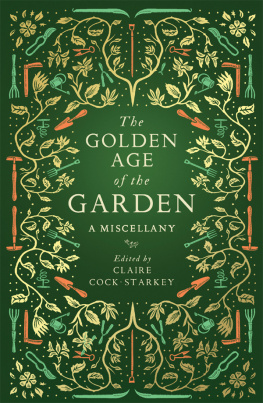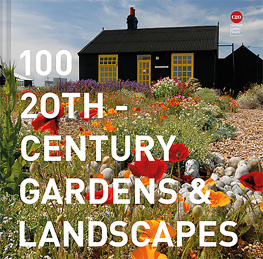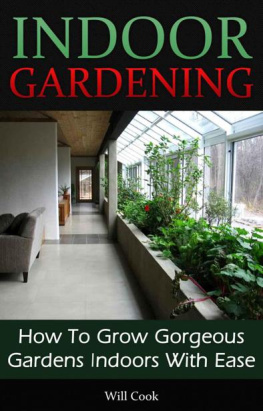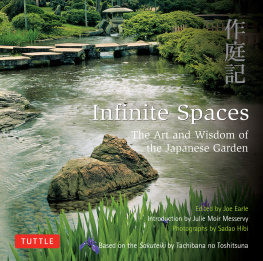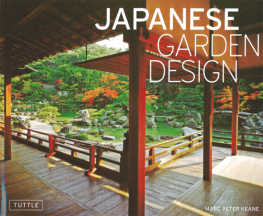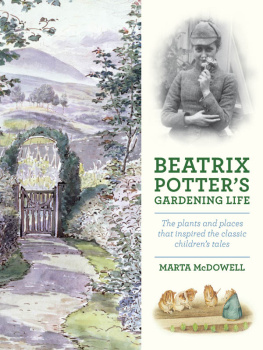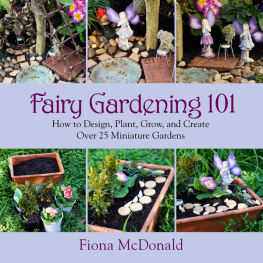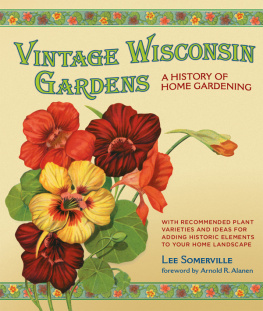The
GOLDEN
AGE
of the
GARDEN


INTRODUCTION
As the seventeenth century made way for the eighteenth, a small revolution in gardening was afoot, one that would change the very nature of great English parks and gardens, and which we continue to appreciate to this day.
During the Renaissance period, the English garden was formal, characterised by trim parterres, elaborate geometric hedges and ordered flower beds, influenced by the Italian and French style of gardens, such as those at Villa dEste, near Tivoli and at Versailles. But during the seventeenth century, the rigid formality of the previous era gradually started to make way for a more natural method of gardening. Designers and architects began to transform country houses and grounds using nature as their guide and inspiration, devising looser, more sympathetic creations that often featured a body of water to provide picturesque reflections, sweeping views, groves of trees and meandering paths: a landscape inspired by a pastoral ideal.
One of the key early gardens was at Stowe in Buckinghamshire. Initially designed in the formal style, the gardens were adapted and improved by William Kent in the 1730s. Kent introduced a naturalistic style, for example remodelling the formerly octagonal lake into a more organic shape, in order to create a garden that allowed visitors to wander through the park, constantly surprised and delighted by new vistas and architectural features.
As the new movement grew, a name was coined to describe its pioneers: landscape gardener. It was first used in the mid-eighteenth century by poet and gardener William Shenstone and was later adopted by Humphry Repton to describe his profession.
The golden age of English gardens is best encapsulated by the influential designs of Lancelot Capability Brown, a man who used the sunken fence (or ha-ha) to open up the views from the house, looking through the garden to the fields and landscape beyond. His naturalistic planting of clumps, belts and serpentine walks proved extremely popular, and he inspired many imitators.
Brown and his followers were not the only major influence on the English garden of the period, however. Some other key designers were preoccupied with ideas about the nature of beauty and how this translated to the landscape. Most notably William Gilpin, Uvedale Price and Richard Payne Knight pondered on the idea of the picturesque the creation of a scene that invites the landscape painter to capture it. Price was critical of Brown, finding his landscapes too mannered and formulaic, and argued that for a truly picturesque scene there should be drama in the shape of a gnarled tree, a rugged valley or a rock- strewn cascade.
As the intellectual debate rumbled on, many practical gardeners took the theories of the picturesque and applied them to their designs. Thomas Whatelys influential book Observations on Modern Gardening (1770) included descriptions of many of the grounds that had been landscaped in this new style. Whatelys book proved extremely popular and was instrumental in spreading the English style of garden to the Continent and beyond. Indeed, in 1786 future US presidents Thomas Jefferson and John Adams came to England armed with Whatelys tome as their guide as they made a tour through English gardens a trip that was to prove influential on their own taste in gardening.
As the English Garden took on its own distinct style, it continued to attract fans around the world. Russian Empress Catherine the Great showed much enthusiasm and went on to create two gardens in the English style near St Petersburg. French philosopher Jean-Jacques Rousseau was equally charmed by landscape gardening, and was especially fond of the English-style garden at Ermenonville, near Oise, which had been inspired by Rousseaus writings on the ideal, natural garden.
The reform in the style of English gardening went beyond practical theories and essays on the nature of beauty; it seeped into literature and popular culture. Poets and writers were inspired by the new style the poet William Shenstone not only wrote about the natural landscape in both verse and prose, he also applied those ideas in his own influential garden, The Leasowes. Writers such as Walter Scott and Daniel Defoe, essayists Joseph Addison and Richard Steele all added their voices to the debate as around them the English national landscape was forever changed by Kent, Brown, Repton and Loudon, among others.
The English garden was not created by one individual but rather by many different voices and practitioners developing and refining the concepts. As time moved on, so new gardeners came to the fore, each adding their own spin to the landscape garden. Unlike Capability Brown and William Kent, who left little in the way of writings on their theories and methods, Humphry Repton and J.C. Loudon both wrote widely on gardening, providing greater understanding of the thinking behind their designs and commentary on those who came before them. Loudon in particular was a keen writer and many of his works, notably The Gardeners Magazine and The Suburban Gardener and Villa Companion helped translate landscape gardening theories for the smaller gardens of the growing middle classes.
By the early nineteenth century the golden era of garden design was coming to a close as Victorian fashions, such as the wild garden, started to become more popular. J.C. Loudon in a sense embodies the shift from the landscape garden movement towards the Victorian style, which was influenced by the exotic plants coming into Britain from across the Empire and characterised by grand public spaces such as Kew Gardens.
Despite the new trends and fashions in gardening that have come and gone since, many of the creations of that period stand today (Stowe, Blenheim and Chatsworth, for example, retain much of the landscaping from this period), and continue to attract visitors from around the world. The Golden Age of the Garden celebrates the era of landscape gardening, looking back on contemporary accounts of its development using letters, essays, diaries, travelogues and gardening manuals. The words of key gardeners, and thinkers, along with descriptions of renowned gardens are interwoven with gardening advice and instruction, providing a fascinating path through the changing themes and styles of the landscape gardening movement.
The novice to the most green-fingered of gardeners will, I hope, find plenty to surprise, inspire and delight within these pages.
*
A note: The archaic spelling and punctuation of the original extracts have been preserved in order to better reflect the writing of the period. Although the golden age of gardens could loosely be defined as coming to a close by the 1840s, I have retained a few extracts from later dates that offer good illustrations of famous golden era gardens or techniques.

Walpole on the perfection of English gardens:
We have discovered the point of perfection. We have given the true model of gardening to the world; let other countries mimic or corrupt our taste; but let it reign here on its verdant throne, original by its elegant simplicity, and proud of no other art than that of softening natures harshnesses and copying her graceful touch.
The History of the Modern Taste in Gardening
Next page
